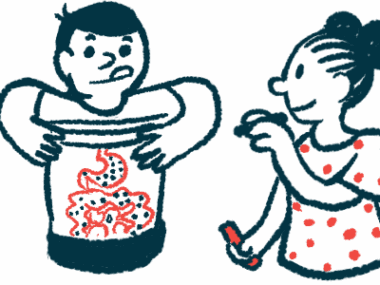New Guidelines for Dopaminergic Therapy Set for Early Parkinson’s
Written by |

The American Academy of Neurology (AAN) has issued a new group of guidelines designed to aid clinicians in prescribing the most effective and appropriate dopaminergic medications — those that increase or mimic dopamine — to patients in the early stages of Parkinson’s disease.
The new guidelines, endorsed by the Parkinson’s Foundation, were drafted after revision of the most updated information regarding dopaminergic medications, their efficacy, and side effects.
“Choosing to start a medication is a collaborative decision between a person with Parkinson’s disease, their neurologist, and their caregiver,” Tamara Pringsheim, MD, MSc, fellow of the AAN and the guideline’s lead author, said in a press release. “The right medication will depend on a person’s symptoms, age and life circumstances. They are encouraged to discuss the potential benefits and adverse effects of medication options with their neurologist and care team.”
A summary of the newly drafted guidelines was published in a special article, “Dopaminergic Therapy for Motor Symptoms in Early Parkinson Disease Practice Guideline Summary, A Report of the AAN Guideline Subcommittee,” in the journal Neurology.
The first guidelines, published in 2002 by the AAN, contained recommendations regarding the use of dopaminergic medications for patients with Parkinson’s.
Since then, however, new medications and new formulations of existing therapies have become available.
In this article, the AAN Guideline Subcommittee reviewed current data on the options available for initiating dopaminergic therapies for motor symptoms in early-stage Parkinson disease to provide recommendations to clinicians. The full evidence review is available for download here.
The subcommittee was set up by a multidisciplinary panel that included content and methodology experts, patient representatives, and a staff representative from the Michael J. Fox Foundation for Parkinson’s Research.
Parkinson’s disease is characterized by the loss of neurons, or nerve cells, that produce the neurotransmitter dopamine — a chemical messenger essential for muscle control. As a result, patients develop motor symptoms, including tremor, rigidity, and slowness of movement (bradykinesia).
Levodopa, which is a precursor to dopamine, has long been one of the gold standards for treating these symptoms.
Other available therapies include dopamine agonists, which mimic the effect of dopamine by binding to the dopamine receptors, and monoamine oxidase type B (MAO-B) inhibitors, which act by slowing the breakdown of dopamine.
Neurologists should counsel early-stage patients on the benefits and risks of the three types of medications.
According to the guideline recommendations, levodopa is superior to the other treatments at reducing motor symptoms.
However, when compared with dopamine agonists, initial treatment with levopada is more likely to cause dyskinesia — the uncontrolled, involuntary movements of the face, arms, legs, or trunk — during the first five years. During these first years, however, the prevalence of severe or disabling dyskinesia is low.
Taking this into account, the guidelines recommend that neurologists prescribe the lowest effective dose of levodopa as a way to maintain its benefits and minimize the risk of dyskinesia.
Despite being less likely to cause dyskinesia, dopamine agonists were more likely to cause impulse-control disorders, such as compulsive gambling, eating, shopping, or sexual activity. Hallucinations were also common.
Dopamine agonists were also linked with increased risk of daytime sleepiness. This should be taken into account when prescribing these medications to patients whose jobs require driving or operating heavy machinery.
Patients taking dopamine agonists and MAO-B inhibitors are more likely to stop their treatment than those on levodopa due to side effects. Also, those on MAO-B inhibitors were more likely to require additional therapy within two to three years compared with patients being treated with levodopa or dopamine agonists.
“We carefully reviewed the available research on the effectiveness and possible risks of medications to treat motor symptoms in people with early Parkinson’s disease and found that levodopa is usually the best first treatment for these symptoms,” Pringsheim said.
“Still, there are side effects with levodopa as well as other drugs, so it is important that a person newly diagnosed with Parkinson’s disease discusses all options with their neurologist before deciding on the best treatment plan for them,” she added.
According to the guidelines, future research “will hopefully establish effective disease-modifying therapy that would be initiated when the diagnosis is made, and possibly initiated in patients with probable prodromal [early-stage] PD [Parkinson’s disease] before motor features are evident.”






